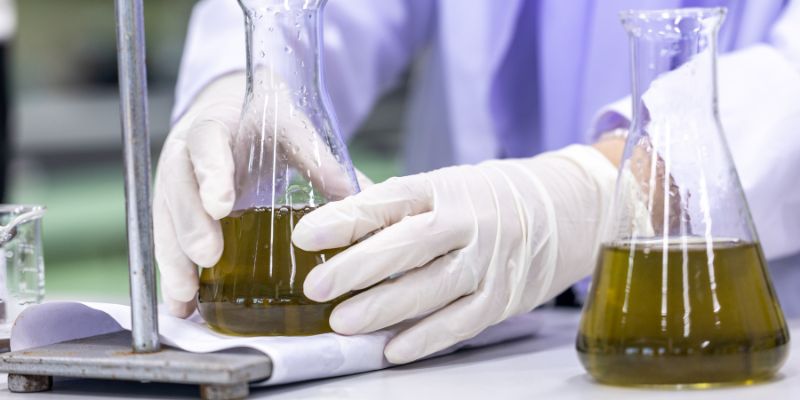The Chemical Oxygen Demand (COD) in wastewater indicates the level of pollution caused by organic compounds. When COD levels exceed permissible limits, it can seriously harm the environment and pose health risks to humans. This article will help you understand the role of COD, the consequences of high COD levels, and how to effectively measure and control it.
1. What is COD in Wastewater?
COD (Chemical Oxygen Demand) is an index that measures the amount of oxygen required for strong oxidizing agents to break down organic and some inorganic compounds in wastewater. Simply put, COD reflects the pollution level in water based on the oxygen needed to treat the contaminants. The higher the COD value, the greater the organic pollution in the water.

Measuring COD is a crucial step in assessing wastewater quality
Measuring COD is a key step in wastewater quality assessment, and it serves several critical purposes:
-
Evaluating organic pollution levels: A high COD indicates a large amount of organic matter in the wastewater, leading to increased pollution.
-
Assessing treatment efficiency: A reduction in COD after treatment shows the system's effectiveness in removing organic compounds.
-
Environmental compliance: Controlling COD helps ensure compliance with environmental regulations and prevents ecological damage.
-
Protecting health and ecosystems: Proper COD management protects water sources, public health, and ecological balance.
-
Water resource management: Monitoring and controlling COD supports sustainable water use and resource planning.
2. Consequences of Excessive COD in Wastewater
High COD levels not only pollute water sources but also cause significant environmental and health impacts.
2.1 Depletion of Dissolved Oxygen, Leading to Aquatic Life Death
When COD is high, the decomposition of organic matter consumes large amounts of dissolved oxygen. This reduces oxygen levels in water, suffocating aquatic organisms and disrupting underwater ecosystems, food chains, and biodiversity.
2.2 Contamination of Groundwater and Surface Water
Untreated or poorly treated wastewater with high COD can seep into the ground and pollute groundwater. Additionally, runoff can contaminate rivers and lakes, affecting water quality for domestic and agricultural use.

Untreated or substandardly treated wastewater with high COD levels
2.3 Violation of Environmental Regulations on Wastewater Discharge
Discharging wastewater with COD levels beyond the allowable limit violates environmental laws. Businesses or individuals may face administrative penalties or even criminal charges if severe damage is caused.
3. Common Methods to Measure COD in Wastewater
Measuring COD is essential for assessing wastewater quality and treatment performance. Several methods are available, each with its own advantages and limitations.
3.1 Titration Method
This is a traditional and widely used method. A wastewater sample reacts with a strong oxidizing agent (usually potassium dichromate) in an acidic environment. The excess oxidant is then measured by titration with a standard solution, allowing the COD to be calculated. This method is accurate but requires technical expertise and time.
3.2 Spectrophotometric Method
This method is based on measuring light absorption by the sample at a specific wavelength. The level of light absorbed is directly proportional to the concentration of organic compounds, from which COD can be determined. This technique is faster and simpler than titration.

The spectrophotometric method measures COD based on the principle of light absorption
3.3 Rapid Test Methods (Test Kits, Direct Measurement Devices)
Today, various test kits and direct measurement devices are available for quick COD testing. These often rely on colorimetric reactions or electrochemical sensors. They are fast, convenient, and easy to use, although they may be less accurate than traditional methods.
COD is a vital indicator that requires careful monitoring and control. By understanding COD, its environmental impacts, and the best practices for measuring and managing it, we can effectively protect our water sources, ecosystems, and community health.


